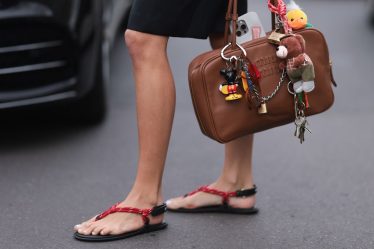
Fashion is more than just clothing; it’s a form of self-expression, a mirror to society, and a reflection of culture. Throughout history, fashion has evolved from simple, practical garments to complex, trend-driven statements. Today, it influences everything from social media to the runways of Paris and New York. But what are the forces behind the ever-changing landscape of fashion trends, and how do they shape the way we dress and perceive ourselves?
The Roots of Fashion Trends
Fashion trends often start as a response to socio-political events, economic shifts, and cultural movements. In the 20th century, for example, the emergence of the flapper style in the 1920s was a direct reaction to the social changes brought on by World War I and the suffragette movement. The rebellion against the constraints of Victorian-era fashion marked a new era of freedom for women, seen through shorter skirts and looser silhouettes.
Similarly, the 1960s and 1970s saw the rise of countercultural movements. The bohemian look, often associated with hippies, was symbolic of anti-establishment sentiment. These fashion choices weren’t just about clothing but a way of challenging the status quo and celebrating individuality.
Fashion is cyclical, and many trends from these eras are revisited and reinterpreted in modern fashion. From the rise of minimalism in the 90s to the grunge look, fashion trends evolve, building on past influences and adjusting to the needs and desires of each new generation.
The Role of Technology in Shaping Fashion
In today’s world, technology plays a significant role in shaping fashion trends. The rise of social media platforms like Instagram, TikTok, and Pinterest has revolutionized how trends emerge and spread. Unlike the past, when fashion trends were dictated by designers and fashion houses, now anyone with a phone and a sense of style can influence what’s “in” or “out.” Street style and influencer culture have democratized fashion, allowing for a more inclusive approach where fashion is available to everyone, not just those who can afford haute couture.
Furthermore, fashion technology has opened new doors for innovation. Designers are experimenting with fabrics, incorporating smart textiles, 3D printing, and even augmented reality (AR) to create futuristic garments. The integration of sustainability in fashion is another trend, with eco-friendly materials and ethical production practices becoming a central focus. The demand for transparency in how clothes are made is pushing brands to adopt sustainable practices.
Sustainability and Ethical Fashion
In recent years, sustainability has become a key theme in the fashion industry. As climate change and environmental degradation become increasingly pressing issues, consumers are seeking out brands that prioritize eco-friendly practices. Sustainable fashion doesn’t just mean using recycled materials but also focuses on ethical labor practices, reducing waste, and promoting circularity—where clothes are designed to last longer and be reused rather than discarded.
Brands like Patagonia, Stella McCartney, and Reformation have pioneered the sustainable fashion movement, proving that it’s possible to merge style with environmental responsibility. However, the sustainability trend isn’t just about buying eco-friendly products; it’s also about changing the way we think about consumption. The rise of slow fashion, which encourages consumers to buy fewer, higher-quality items that last, is challenging the fast fashion model, which often promotes overconsumption and waste.
Fashion as Self-Expression
Fashion is also an outlet for self-expression. In today’s diverse world, people are increasingly using their wardrobes to express their personalities, beliefs, and cultural backgrounds. Gender-neutral fashion, for example, has gained traction as a reflection of society’s shifting views on gender identity. Designers are embracing fluidity in fashion, creating collections that break free from traditional gender norms. Androgynous models and gender-inclusive campaigns are becoming more mainstream, challenging the binary and promoting inclusivity.
Similarly, the rise of vintage and secondhand shopping reflects a cultural desire to reconnect with the past and create a unique personal aesthetic. Thrift shopping, once seen as a necessity, has become a celebrated trend. It allows consumers to express their individuality by wearing one-of-a-kind pieces that aren’t mass-produced. This shift towards personal style over brand-driven fashion is empowering, giving people the opportunity to showcase their tastes in a more authentic way.
The Influence of Street Style and Pop Culture
The influence of street style has never been more evident. In major cities like New York, London, Paris, and Tokyo, fashionistas are blending luxury with casual streetwear. High-end designers are collaborating with streetwear labels to create limited-edition collections, merging the worlds of high fashion and street fashion. Iconic brands like Supreme, Off-White, and Yeezy have made their mark in the fashion industry by tapping into the cultural significance of street culture.
Pop culture also plays a significant role in shaping fashion. Celebrity influence remains a powerful force in dictating trends, with stars like Rihanna, Beyoncé, and Harry Styles regularly setting new fashion standards. The rise of “normcore,” a trend that embraces intentionally bland or “boring” clothing, was largely fueled by celebrity adoption of basic items like plain t-shirts, sneakers, and jeans. Even shows like “Euphoria” have introduced an entirely new aesthetic, influencing the fashion of an entire generation.
The Future of Fashion Trends
Looking ahead, fashion trends will continue to be shaped by advances in technology, sustainability, and inclusivity. We may see more developments in the digital fashion space, with virtual clothing and AR-based shopping experiences becoming more prevalent. Fashion shows might transition entirely into virtual spaces, providing greater accessibility to a global audience.
The ongoing shift towards sustainability and ethical fashion will likely lead to further innovations in fabric technology, recycling processes, and business models. As consumers demand more from brands in terms of transparency and responsibility, the fashion industry will need to adapt and find new ways to align with these values.
Conclusion
Fashion trends are constantly evolving, but they will always remain an integral part of the cultural and social fabric. The way we dress reflects who we are and how we view the world. With technology, sustainability, and inclusivity at the forefront, the future of fashion promises to be more innovative, diverse, and reflective of the global landscape than ever before. Whether it’s high fashion, streetwear, or vintage finds, fashion continues to inspire and empower individuals to express themselves and make statements about the world around them.


